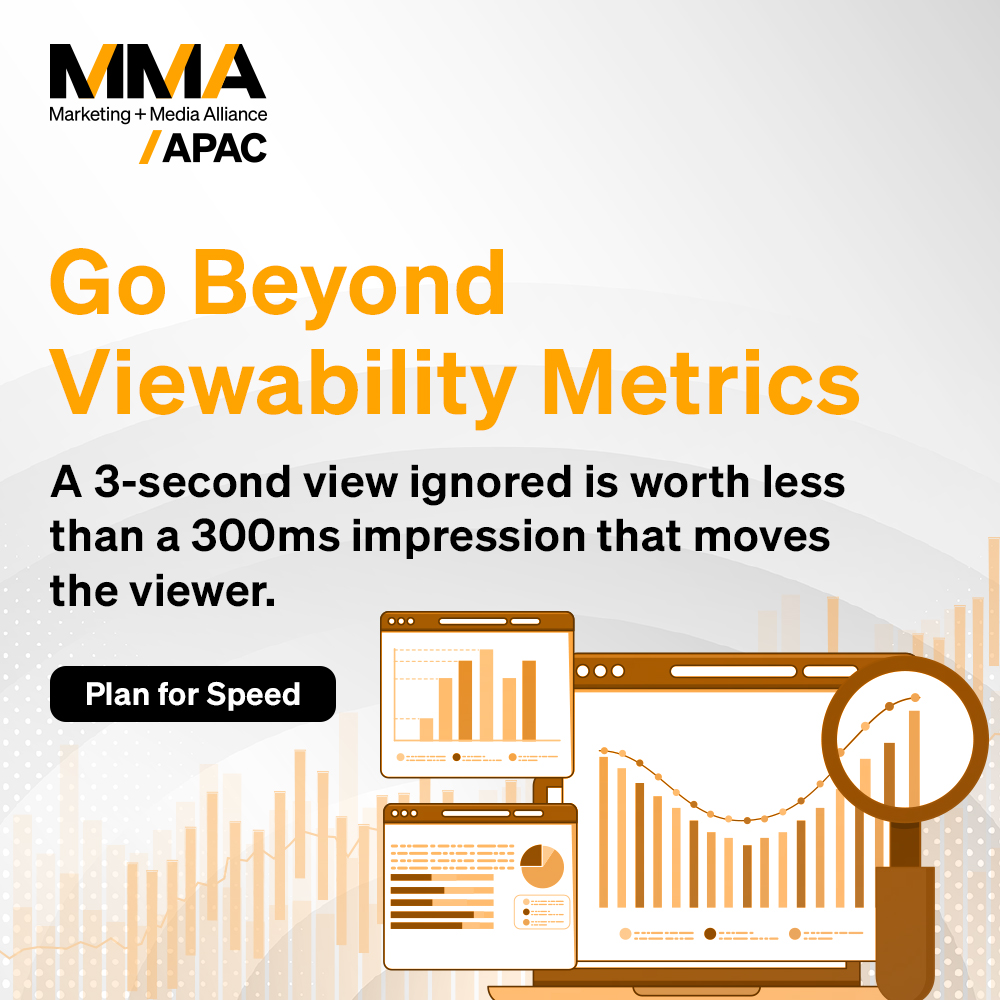
(A new ruleset for marketers who can’t afford to lose attention)
In today’s hyper-scroll world, brands aren’t competing for seconds — they’re competing for milliseconds. The MMA’s First Second Strategy research reveals a truth that should make every marketer sit up straight: the human brain needs less than half a second to see, process, and emotionally react to a mobile ad. In the time it takes to blink, your consumer has already judged you — positively or negatively.
This changes everything.
For years, marketers assumed a linear relationship between exposure time and attention: more seconds = more impact. But neuroscience proves the opposite. Extending exposure can’t fix what goes wrong in the first second — especially on mobile feeds where attention spikes fast and drops even faster. If your opening frame fails, your entire investment is already compromised. Worse, poor-performing ads don’t just go unnoticed — they generate a negative emotional response almost instantly.
Mobile environments amplify this speed. According to the study’s charts (p. 3), mobile triggers both faster attention and stronger cognitive load compared to desktop, particularly for video. This means mobile is not just a smaller screen — it is a higher-velocity cognition zone where creative either wins immediately or loses irrevocably.
And here’s the hard truth:
Most brands are still designing for the 6-, 15-, or 30-second story arc. Not the first-second punch.
To thrive, marketers must rethink creative development from the ground up — not as a slow burn, but as an immediate ignition. The MMA framework points to the decisive elements: bold visual triggers, emotional cues, balanced color and contrast, and simplified imagery. These aren’t design preferences; they are brain science imperatives for impact.
mma_first_second_strategy_execu…
If attention is the new currency, the first second is the new exchange rate.
Brands that master it will dominate feeds, hearts, and memory. Those that don’t will disappear before consumers even realize they were there.
The neuroscience, eye-tracking evidence, and cognitive insights prove that consumers form judgments in under half a second — and no added exposure can redeem a weak opening. These resources serve as a powerful reminder that modern marketing must be engineered for immediacy, clarity, and emotional impact from the very first frame.
In the next blog, we’ll dive deeper into the neuroscience of rapid attention — why the brain responds so quickly, what sparks instant engagement, and how creative can be built to perform at the speed of human cognition.
Sources
- MMA & Neurons Inc. (2019). Members Only – First Second Strategy Report
- Neurons Inc. (2019). Cognition Research Report Final
- MMA (2019). First Second Strategy Executive Summary



















